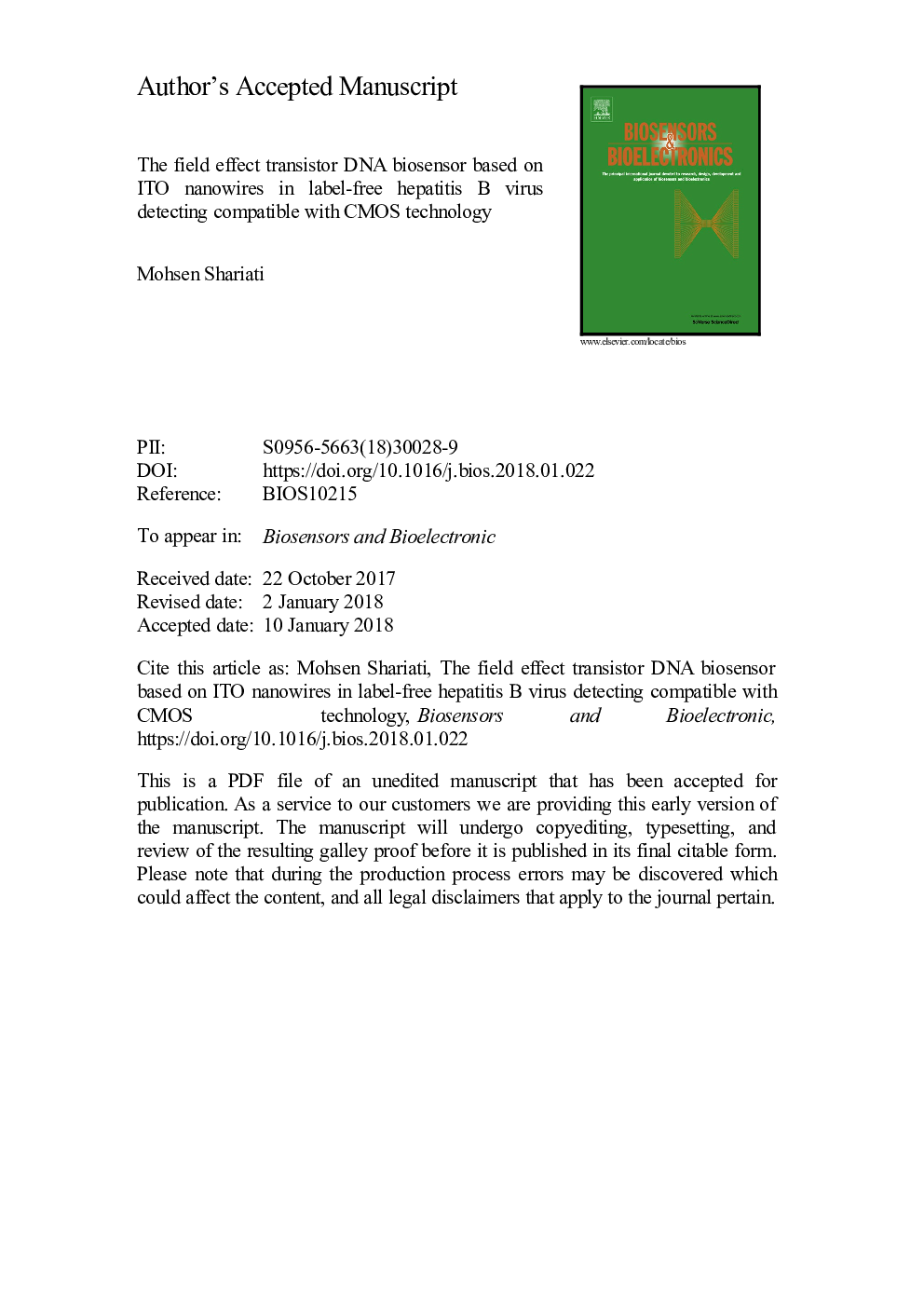| Article ID | Journal | Published Year | Pages | File Type |
|---|---|---|---|---|
| 7229709 | Biosensors and Bioelectronics | 2018 | 21 Pages |
Abstract
In this paper the field-effect transistor DNA biosensor for detecting hepatitis B virus (HBV) based on indium tin oxide nanowires (ITO NWs) in label free approach has been fabricated. Because of ITO nanowires intensive conductance and functional modified surface, the probe immobilization and target hybridization were increased strongly. The high resolution transmission electron microscopy (HRTEM) measurement showed that ITO nanowires were crystalline and less than 50 nm in diameter. The single-stranded hepatitis B virus DNA (SS-DNA) was immobilized as probe on the Au-modified nanowires. The DNA targets were measured in a linear concentration range from 1fM to 10 µM. The detection limit of the DNA biosensor was about 1fM. The time of the hybridization process for defined single strand was 90 min. The switching ratio of the biosensor between "on" and "off" state was ~ 1.1 à 105. For sensing the specificity of the biosensor, non-complementary, mismatch and complementary DNA oligonucleotide sequences were clearly discriminated. The HBV biosensor confirmed the highly satisfied specificity for differentiating complementary sequences from non-complementary and the mismatch oligonucleotides. The response time of the DNA sensor was 37 s with a high reproducibility. The stability and repeatability of the DNA biosensor showed that the peak current of the biosensor retained 98% and 96% of its initial response for measurements after three and five weeks, respectively.
Related Topics
Physical Sciences and Engineering
Chemistry
Analytical Chemistry
Authors
Mohsen Shariati,
